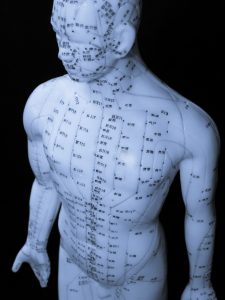What is acupuncture?
There are 2 types of acupuncture, Western Medical Acupuncture (also known as Dry Needling) which is based on science, anatomy and physiology and Traditional acupuncture which is based on Traditional Chinese Medicine.
At Conwy Physio Clinic we employ Western Medical Acupuncture. Treatments are based on western medical acupuncture research.
Research has shown the effectiveness of Acupuncture for pain relief and in the treatment of many musculoskeletal conditions. Therefore, Acupuncture is now one of the many skills employed within physiotherapy and medicine as part of an integrated approach to the management of pain and inflammation. Physiotherapists base their treatments on scientific research and clinical evidence that Acupuncture can reduce pain by stimulating the brain and spinal cord to produce natural pain-relieving chemicals such as endorphins, melatonin (which promotes sleep) and serotonin (to promote well-being). These chemicals assist the body’s healing processes and offer pain relief as a precursor to other treatments such as manual therapy or exercise to aid recovery and improve quality of life.
Acupuncture may help to:
- Reduce pain
- Alleviate muscle spasm and tension
- Facilitate the healing process
- Help to promote local and general relaxation
- Promote general well-being
- Improve sleep pattern

There are two main techniques for applying acupuncture, these are described below:
Conventional acupuncture involves the use of single-use, pre-sterilised disposable needles of varying widths, lengths and materials that pierce the skin at the acupuncture points. The physiotherapist/practitioner will determine the locations of these points based on an assessment. A varying number of needles may be used during each treatment, these are typically left in position for between 15 and 30 minutes before being removed.
Trigger point needling is the insertion of acupuncture needles into specific areas of tenderness and tension within a muscle, with the intention of relieving local discomfort. These points may or may not be recognised acupuncture points. The tissue is felt to relax under the needle, which is then removed. Trigger point needling often produces an effect much more quickly, and therefore, does not require the 15-30-minute treatment time.